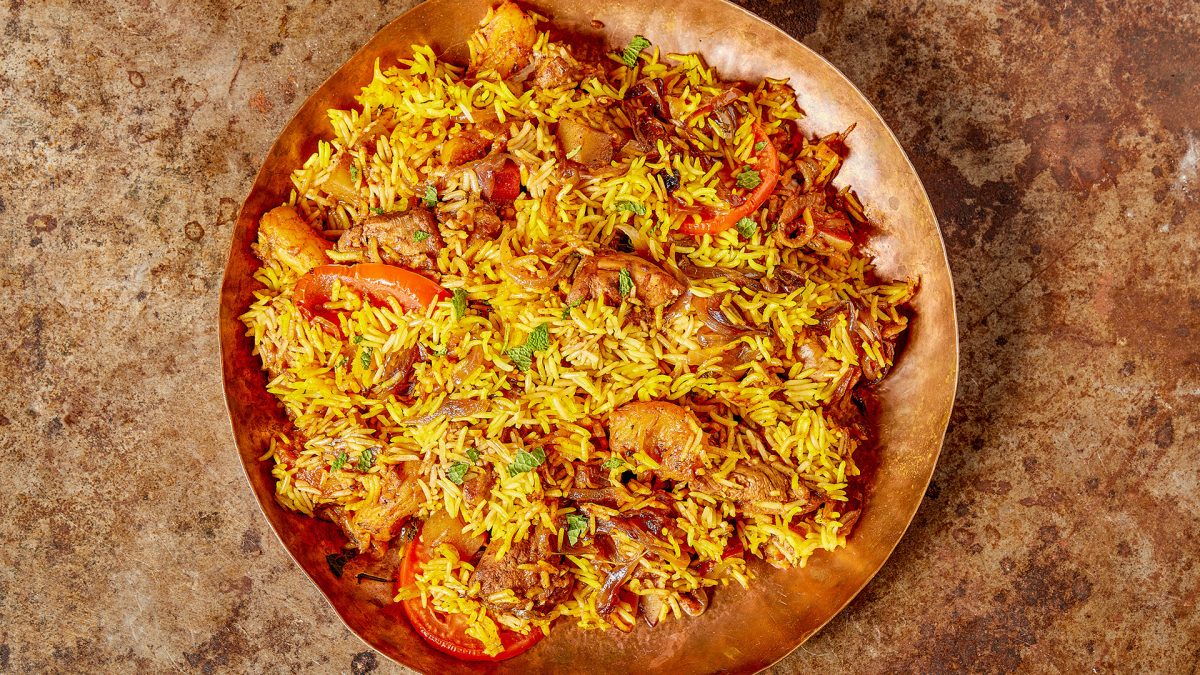
Biryani: A Flavorful Journey Through the Heart of Pakistani Cuisine
Biryani: The Heart of Pakistani Cuisine
Biryani, one of the most beloved and flavorful dishes in Pakistan, is a rich, aromatic rice dish brimming with spices, herbs, and usually meat such as chicken, beef, mutton, or fish. Though it has roots in the Indian subcontinent, particularly in the Mughal era, biryani has become a cornerstone of Pakistani cuisine, with each region offering its own variation. It is a dish that has become synonymous with celebrations, family gatherings, and communal meals, deeply embedded in the cultural fabric of Pakistan.
A Brief History of Biryani
The history of biryani in Pakistan is closely tied to the rich history of the Indian subcontinent. It is believed that the Mughal emperors introduced biryani to the region, where it evolved with local spices and ingredients. The name ‘biryani’ is derived from the Persian word “birian,” which means “fried before cooking,” referring to the method of cooking the rice and meat together after lightly frying it in ghee or oil.
Over time, the dish spread throughout South Asia, each region adapting the recipe based on local tastes and ingredients. In Pakistan, biryani has become a national dish, with regional variations that make it uniquely Pakistani.
The Essence of Pakistani Biryani
Pakistani biryani is distinct in its robust flavors and rich ingredients. The dish typically consists of basmati rice, which is long-grained and aromatic, paired with meat (often chicken, mutton, or beef) that is marinated in a blend of yogurt and spices. These spices usually include garam masala, cumin, coriander, cinnamon, cloves, cardamom, and sometimes saffron. The fragrant spices, when combined with the richness of the meat, create a savory, complex flavor profile.
One of the most significant components of biryani is the cooking method. The rice and meat are cooked separately and then layered together in a large pot. This layering technique allows the flavors to infuse, and the rice absorbs the rich, spicy gravy created by the meat, yogurt, and spices. The biryani is often garnished with fried onions, boiled eggs, and fresh coriander leaves, making it visually appealing as well as delicious.
Regional Variations of Biryani in Pakistan
In Pakistan, biryani varies across regions, with different cities and provinces offering their own take on this traditional dish. Some of the most famous regional varieties include:
1. Karachi Biryani
Karachi, the largest city in Pakistan, is known for its spicy and bold biryani. The Karachi biryani is characterized by its fiery heat, which comes from the use of green chilies, red chili powder, and a generous amount of garam masala. Karachi’s biryani also tends to use potatoes, which soak up the spices and add a comforting texture to the dish. The use of tangy yogurt and tomatoes is a hallmark of this variant, contributing to its rich, bold flavors.
2. Hyderabadi Biryani
Hyderabadi biryani, which originated in the southern parts of Pakistan, has a more nuanced, fragrant flavor compared to Karachi biryani. It features a longer cooking time, allowing the spices to meld together more fully. A key feature of Hyderabadi biryani is the use of a special method called “Kacchi Biryani,” where raw marinated meat is layered with rice and cooked together, allowing the meat to tenderize as it cooks in the steam. The flavor is aromatic with a more subtle spice profile, and it often includes yogurt, mint, and fried onions for added depth.
3. Sindhi Biryani
Sindhi biryani, from the Sindh province, is a combination of spicy and tangy elements. The Sindhi version is usually very spicy, with green chilies, red chili powder, and an abundance of fresh coriander. What sets Sindhi biryani apart is the liberal use of sour yogurt, which adds a tangy flavor to balance the heat. The rice tends to be more yellow, often tinted with turmeric, and the dish may also feature a mix of vegetables or boiled eggs.
4. Peshawari Biryani
From the northwestern region of Khyber Pakhtunkhwa, Peshawari biryani is a simpler, milder variant of biryani. It is often less spicy but more aromatic, using fewer chilies and emphasizing the flavor of cumin, coriander, and other herbs. Peshawari biryani may also feature a greater proportion of meat to rice, making it a more meat-centric dish.
Biryani as a Social Dish
Biryani has become more than just a meal in Pakistan; it is a social event. Often served during family gatherings, weddings, festivals, and other celebrations, biryani symbolizes togetherness. The process of making biryani, which often involves multiple family members coming together to cook, creates an atmosphere of unity and shared joy.
It is also a popular street food, particularly in urban areas, where biryani stalls serve up plates of hot, steaming biryani to eager customers. Whether homemade or bought from a local vendor, biryani is a dish that brings people together, creating a sense of community and connection.
Conclusion
Biryani is more than just a dish in Pakistan; it is a reflection of the country’s cultural richness, diversity, and love for flavorful food. From the spicy Karachi biryani to the more subtle flavors of Hyderabadi biryani, each variation offers a unique experience. With its bold spices, tender meat, and fragrant rice, biryani is undoubtedly one of the most iconic and beloved dishes in Pakistan, and it continues to be a source of national pride and comfort for millions.
